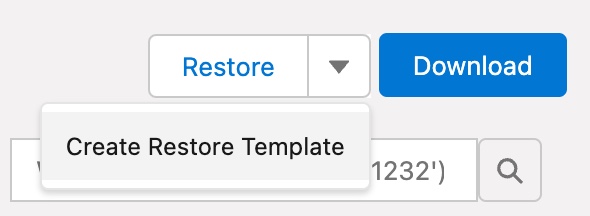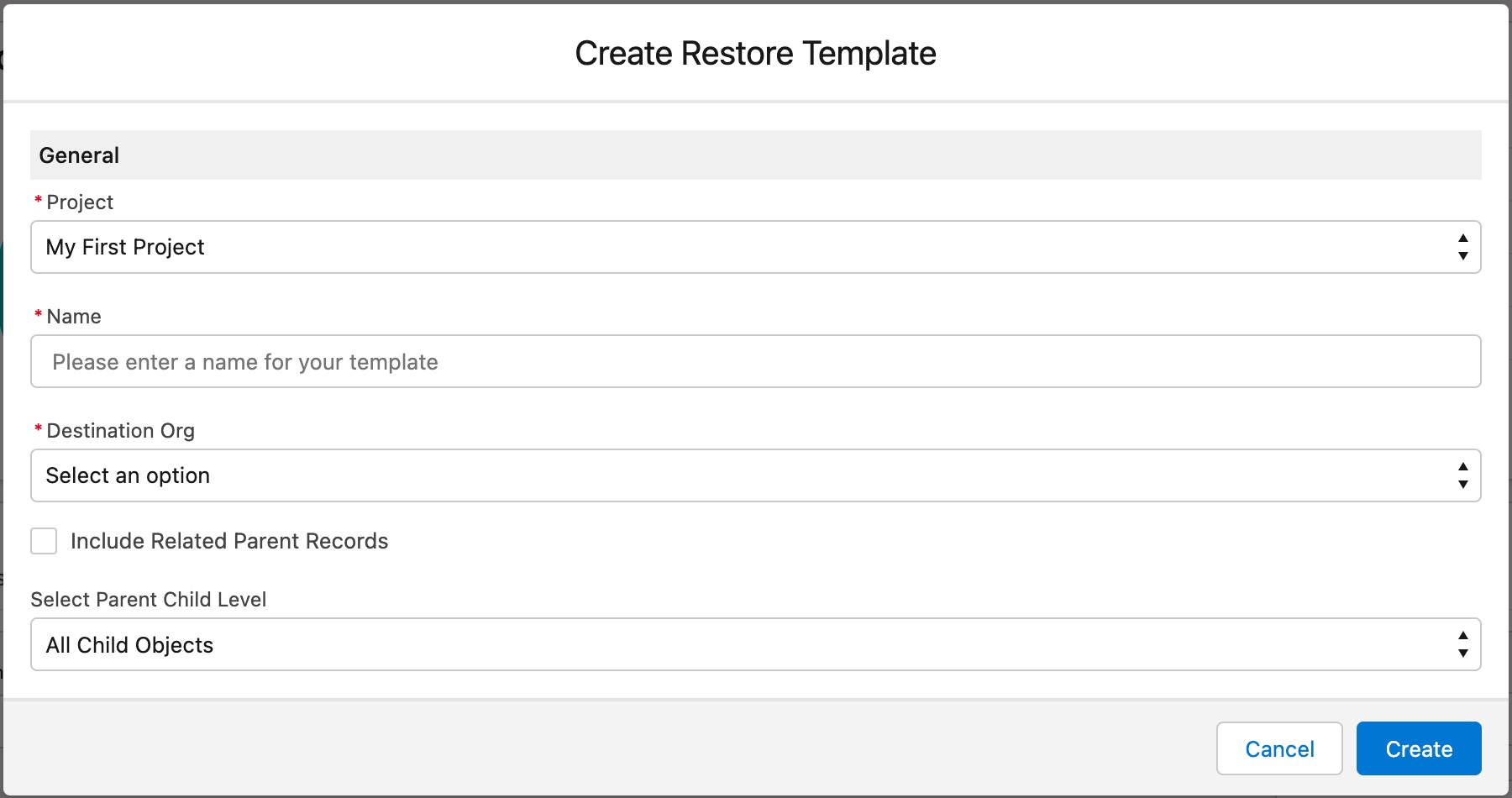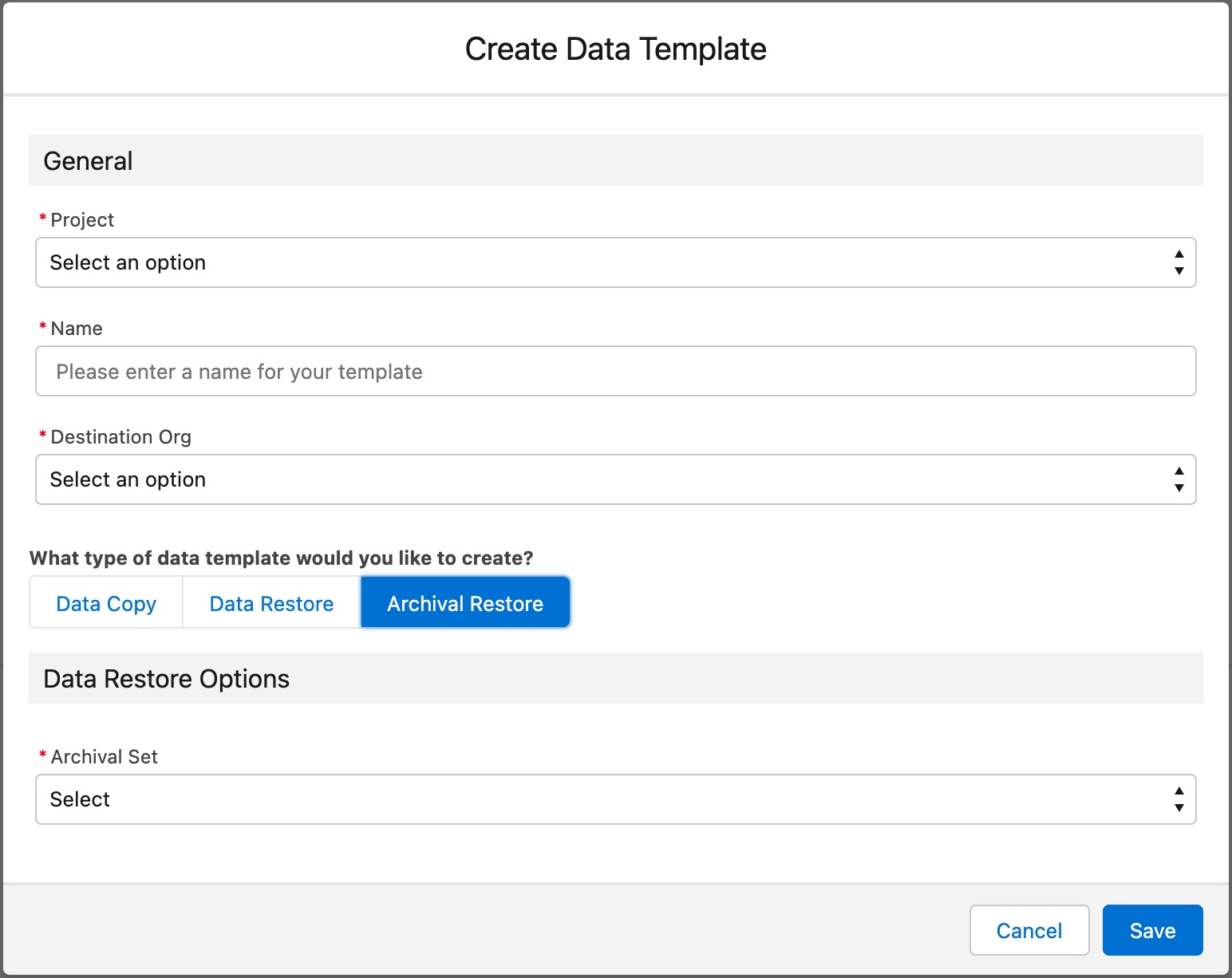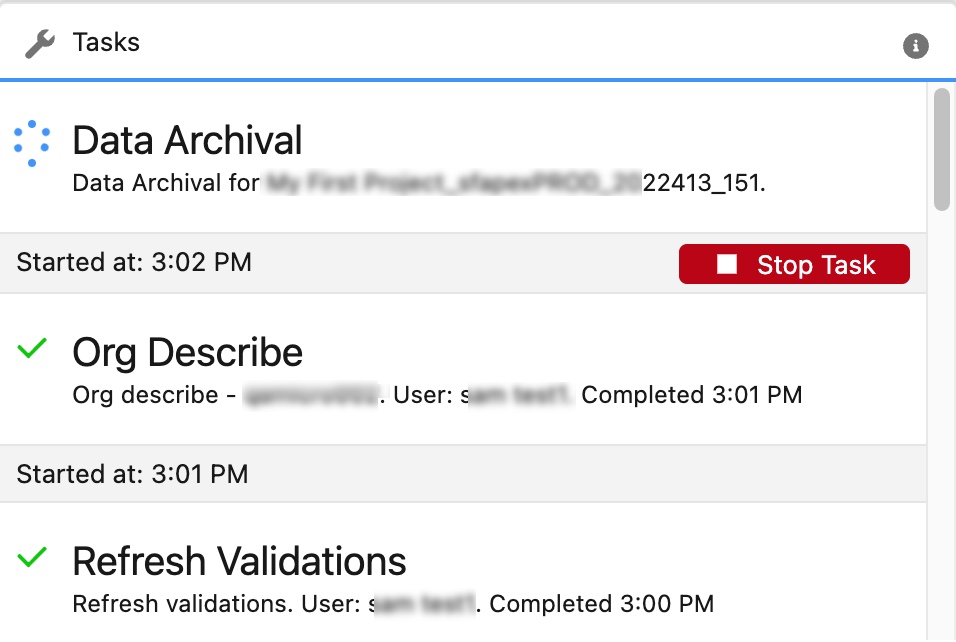Restore Archived Data
Overview
The capability to restore data quickly is critical to any business. A few examples requiring restoring archived Salesforce data with minimal impact on day-to-day business operations:
-
An inactive lead or customer has become active again
-
Regulatory requirement
You can select records or metadata from a snapshot and restore them to the same or different Salesforce organization. You can also perform a direct restore of records from a snapshot.
Data Restore Workflow 
The following workflows are available for enhanced data restoration.
-
Quickly restore records without creating a data template
-
Preview records and create a data template to restore
-
Bulk restore using a data template
When restoring records, the Salesforce App provides the capability to restore all levels of parent-child relationships and orphan records.
For more information, see Understanding Object Relationships.
Use cases for each option
See the following table for some use cases along with the recommended option.
|
Use Case |
Restore without using a template |
Restore using an archival template |
Bulk Restore using Archival Restore Data Template |
|---|---|---|---|
|
Quickly restore a few records |
|
|
|
|
Restore records with advanced configuration |
|
|
|
|
Restore a large amount of data |
|
|
|
Restoring without using a template
If you need to restore a few records quickly, the easiest way is to select the records and click Restore.
NOTE: This method works with only one object at a time.
Procedure
-
On the Salesforce App Console, click Data Archiver.
-
Select an Archival Set.
-
Scroll down to Archival Content to see the archived records.
-
Select the records that you want to restore. You can use the following filters to find the records:
-
Search by Object Name: Use this option to search for objects by name.
-
Where Clause: Use this option to filter using a where clause of SOQL.
-
-
You will have two options at this stage - Restore and Create Restore Template.

Select Restore if you want to start the restoration process without having to create a data template.
Select Create Restore Template if you want to create a Data Template instead. For details, see Restore using a data template.
Note: The quick restore first creates a Data Template and then initiates a task for this template. You can access this template from the Data Template page.
For more information, see Data Template.
You can use the Where clause filter only for the indexed fields.
You will be presented with the Restore Confirmation screen.

See the following table for the available fields and descriptions.
|
Field |
Description |
|---|---|
|
Project Name |
The quick restore process begins with selecting an Archival Set. These three fields display the same information. For more information, see Configure Archiver. |
|
Archival Set |
|
|
Source Organization |
|
|
Destination Organization |
Select the target organization where you want the records to be restored. The destination organization can be different from the source organization. |
|
Include Related Parent Records |
The Archival Restore will restore the parent records if you select this checkbox. For more information, see Understanding Object Relationships. |
|
Select a Child Level |
This dropdown lets you control the level of child objects that you want to restore. You can select all, none, or any specific level. For more information, see Understanding Object Relationships |
|
Settings |
These settings help you quickly fine-tune more options:
|
|
Notification Email Recipient |
If you want to send an email notification after the completion of the archival restore, select Send notification email when finished and enter the email address. |
|
Maximum automatic retries of Data Restore |
If the data restoration records fail in the first attempt, the application will retry those failed records again. Enter the number of retries before the application completes the restore task. |
Click Confirm to create the Archival Restore task. The restore process begins for the selected records.
You can monitor the status of your data restore tasks from the Tasks page. For more information, see Managing Tasks.
Restore using a data template
You can select the records and click Create Restore Template. This option helps you restore archival data while specifying advanced options.
Procedure
-
On the Salesforce App Console, click Data Archiver.
-
Select an Archival Set.
-
Scroll down to Archival Content to see the archived records.
-
Select the records that you want to restore. To quickly locate the desired records, you can use the following filters:
-
Search by Object Name: Use this filter to locate desired objects.
-
Where Clause: Use this to filter using a where clause of SOQL.
-
You will have two options at this stage - Restore and Create Restore Template. Select Create Restore Template.
You will be presented with the Create Restore Template screen.

See the following table for the available fields and descriptions.
|
Field |
Description |
|---|---|
|
Project |
This is the project name of the archival set. For more information, see Archival Set. |
|
Name |
This is the name of the Data Template. This name will be displayed on the Data Templates page. |
|
Destination Organization |
Select the target organization where you want the records to be restored. The destination organization can be different from the source organization. |
|
Include Related Parent Records |
The Archival Restore will restore the parent records if you select this checkbox. For more information, see Understanding Object Relationships. |
|
Select a Child Level |
This dropdown lets you control the level of child objects that you want to restore. You can select all, none, or any specific level. For more information, see Understanding Object Relationships |
Click Create to navigate to Create Data Template screen. The information that you entered here will be used to populate the fields.
For more information on Data Template, see Bulk Restore Using Archival Restore Data Template.
Bulk Restore Using Archival Restore Data Template 
You can select an entire snapshot archive and restore the snapshot to the same or a different Salesforce organization.
The following steps describe the workflow to restore bulk data to a destination environment.
Step 1: In the Data Template page, create a new Data Template and select the Archival Restore option.
Procedure
-
On the Salesforce App console, click Data Template.
-
Click New Data Template.
-
Select the type of data template as Archival Restore.
-
Specify the destination organization in the Destination dropdown list.
-
Select the archival set that you want to restore.
-
Click Save.

For more information, see Creating a Data Template.
Step 2: Select the data to restore using individual records selection, query-based selection, and data template settings.
|
Selection Method |
Description |
|---|---|
|
Records Selection enables you to select individual and related records from an object to restore or copy. |
|
|
Use object queries to select records dynamically. You can add a single object query or multiple object queries. |
|
|
Manage the data template settings, such as:
|
For more information, see Configuring Data Template.
Step 3: To start archival, click Start Archival Restore.
Monitor Archival Restore 
You can view the progress of a restore activity using one of the following options from the Salesforce App console:
-
Floating Tasks pane at the bottom-right of the page

-
Navigate to Tasks and view details about the pending restore job.
For more information about the Tasks page from the navigation bar, see Managing Tasks.
Also, as a Druva Cloud Administrator, you can view data restore details available through a report. For more information about the generated report, see Salesforce Data Archival and Restore Report.



